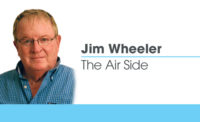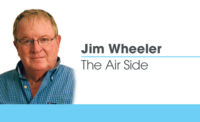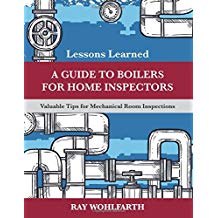The case for dry nitrogen

I don’t know if your company carries and promotes the use of dry nitrogen, but it is a must whenever a service tech is brazing refrigerant lines. Unfortunately, too few are using it today.
Yes, the tanks are heavy and they take up a lot of space, but believe me, you wouldn’t want anyone doing brazing on your home or company air-conditioning or refrigeration system without it. Why not? Because wherever oxygen is present in the brazing process, a lot of system-destroying contamination is created. Try heating some copper tubing with a torch and see what happens.
Of course, there is little to be concerned about when the exterior of the refrigerant lines or components are darkened and bubbly with flux and oxides on the outside. But even then, the best service techs or installers will take the time to clean it off. However, on the inside this stuff leads to plugged metering devices and failed compressors. Not only are small chunks released internally by the refrigerant flow to do their damage, but remember the copper oxide also is very conductive. You don’t want this stuff getting into the compressor motor windings.
So, what does dry nitrogen do? Whenever an installer or service tech is doing brazing on an open system, the person should be forcing a small amount of low-pressure dry nitrogen through the lines to displace any oxygen that is present. Nitrogen is an inert gas that keeps the interiors clean. Nitrogen also has two other beneficial uses.
1) Because the nitrogen is super dry, its flow also is removing some of the destructive moisture that may be present. In fact, nitrogen is a good (and cheaper) gas to use in a triple-evacuation process.
2) When a proper valve and gauge is mounted to the tank; with the system off, dry nitrogen can be added to the existing refrigerant in order to elevate the internal system pressures to make any refrigerant leaks easy to find. No service truck should be without it!
Is using dry nitrogen when brazing really all that important? Well, the next time you are invited for an HVACR system factory tour, stop and look closely at the brazing processes. You’ll find manufacturers are meticulous about using it in their assembly. Why aren’t more service techs doing the same?
I’ve been in this industry for more than 45 years now and the most unfortunate thing I’ve witnessed over that time is a careless breakdown of long-established good servicing practices. Back when I started, all service and installation trucks carried nitrogen. I certainly used it on my trucks back when I ran a service business. But I don’t see it being carried on trucks as much today. The problem I’m sure is partly the fault of fewer apprenticeship programs and partly the fault of what are thought to be “cost-saving measures.” The end result is systems that simply don’t last as long.
Of course, in their desire to make HVACR systems easier to install, some manufacturers are employing methods to keep any brazing from being done on their equipment. However, the best installers and service techs usually will braze filter driers into the lines to extend the equipment life. But along with these added components, they also should remember to braze with nitrogen!
Looking for a reprint of this article?
From high-res PDFs to custom plaques, order your copy today!






